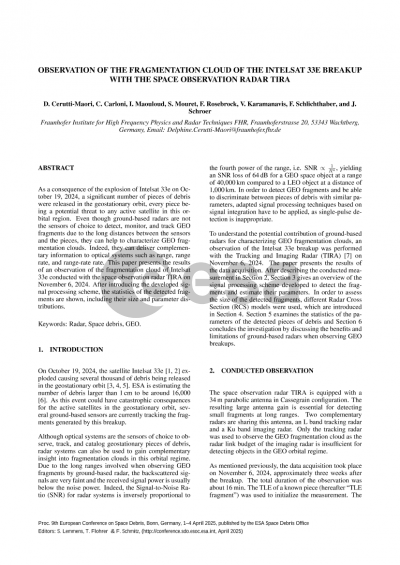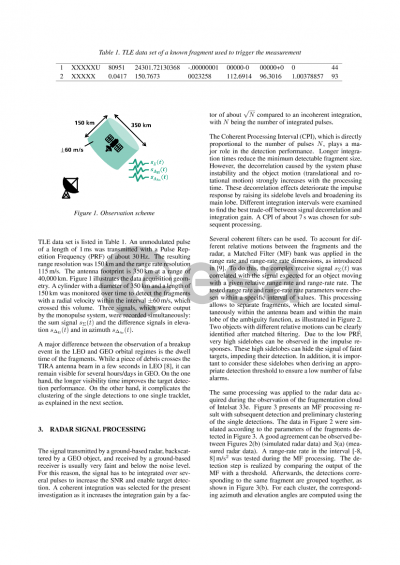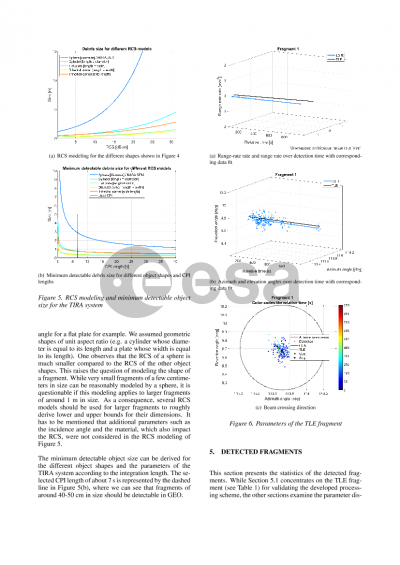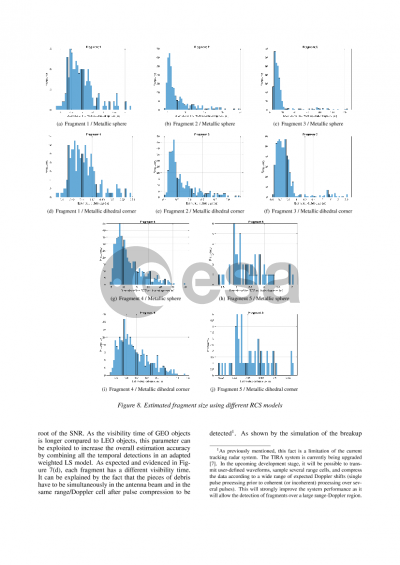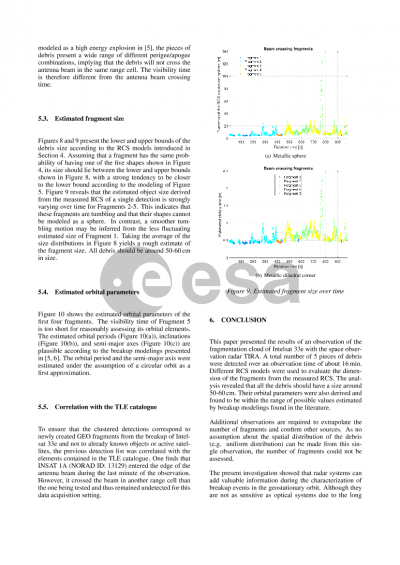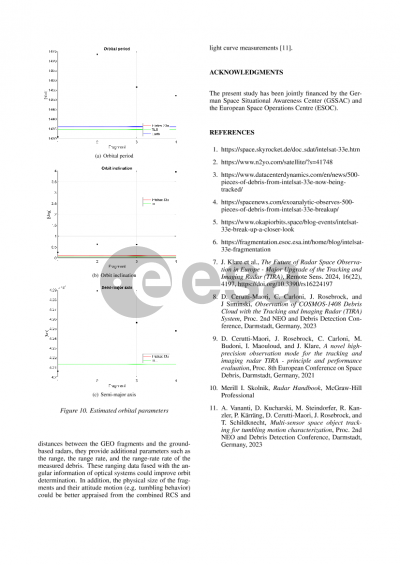Document details
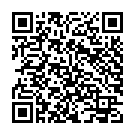
Abstract
On October 19, 2024, the satellite Intelsat 33e exploded causing several thousand of debris being released in the geostationary orbit. ESA is estimating the number of debris larger than 1 cm around 20.000. As this event could have catastrophic consequences for the geostationary orbit, several ground-based sensors are currently tracking the fragments generated by this breakup.
Although optical systems are the sensors of choice to observe, track, and catalogue geostationary fragments, radar systems can also be used to gain complementary insight into fragmentation clouds in this orbital regime. Due to the long ranges involved when observing the pieces of debris by ground-based radar, the backscattered signals are very faint and several pulses have to be coherently processed to detect these fragments.
One observation was conducted with the space observation radar TIRA on November 6, 2024. An unmodulated pulse of a length of 1ms in L band was used yielding a range resolution of 150 km and a range rate resolution of 115 m/s. The duration of the acquisition was about 15 min. A TLE of a known fragment was used to initialize the observation. In order to separate the debris within the antenna beam (with a footprint of 180 km at 40.000 km) and within the main lobe of the ambiguity function, a matched filter bank was applied in the range rate and range-rate rate dimensions.
The coherent detection interval plays a major role in the detection performance. Longer integration times reduce the minimum detectable fragment size. However, the decorrelation caused by the system phase instability and the object motion strongly increases with the processing time. These decorrelation effects deteriorate the impulse response by raising its sidelobe levels and broadening its main lobe. Different integration intervals are currently under examination to find the best trade-off between the effect of decorrelation and integration gain. In a first processing, the integration time was set to detect a 1 m object modeled as a metallic sphere. Theoretical investigations show that fragments down to 50 cm should be detectable in GEO (assuming a fully coherent system).
A major difference between the observation of a breakup event in the LEO and GEO orbital regimes is the dwell time of the fragments. While a debris piece crosses the TIRA antenna beam in a few seconds in LEO, in GEO it can remain visible for several hours/days. In order to estimate the number of fragments, a clustering step regrouping the multiple detections of the same piece of debris over time has to be performed. The number of fragments was currently estimated around 15 (very preliminary number).
In this paper, the results of the conducted observation and of future measurement campaigns will be presented. After briefly introducing the developed signal processing scheme, the statistics of the detected fragments will be presented, including their size and parameter distributions and the detection rate.
Preview
